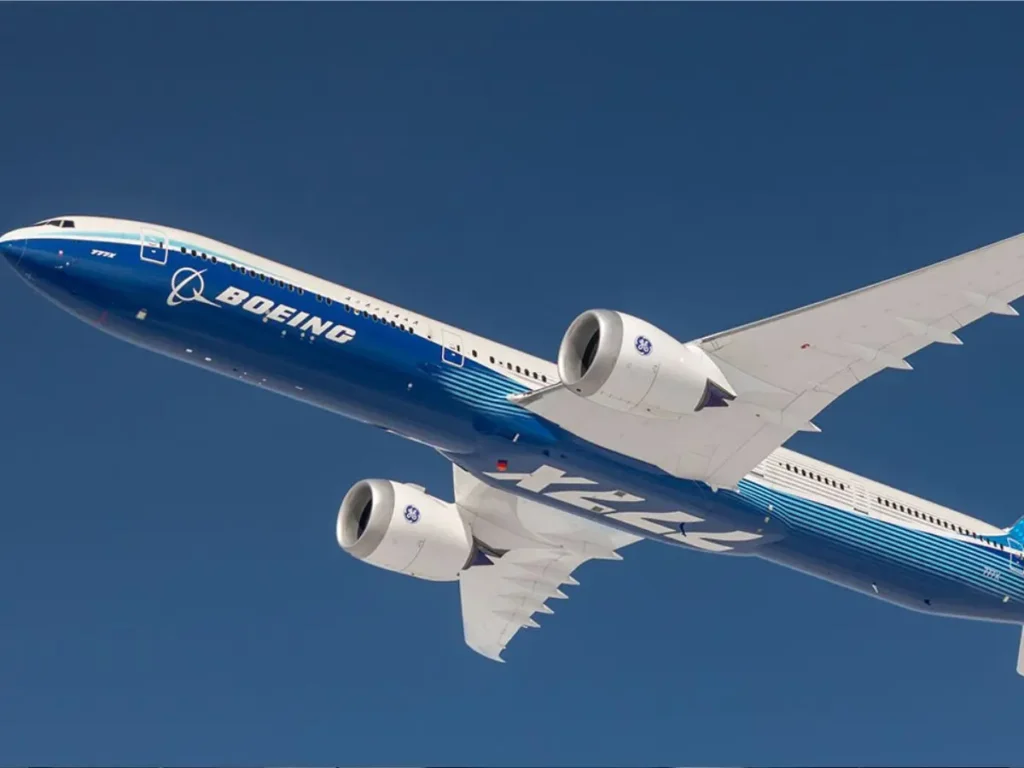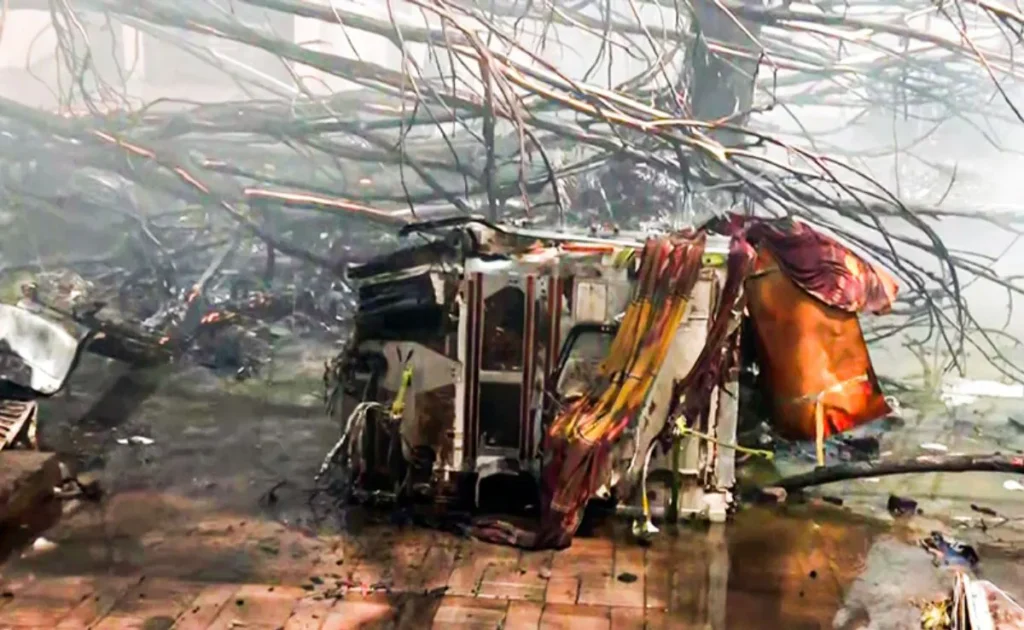Table of Contents
The Boeing 787 Dreamliner represents a leap in aviation technology, known for its efficiency, composite materials, and passenger comfort. However, the crash of Air India Flight 171, a Boeing 787-8, in Ahmedabad on June 12, 2025, has brought renewed attention to this aircraft. This blog provides a detailed exploration of the Boeing 787-8 Dreamliner, its development, design, operational history, and the context surrounding the Ahmedabad incident.

Overview of the Boeing 787 Dreamliner
The Boeing 787 Dreamliner is a family of long-haul, wide-body, twin-engine jetliners designed to enhance fuel efficiency and passenger comfort. Launched to replace aging aircraft like the Boeing 767, the Dreamliner introduced innovations such as a composite airframe, advanced electrical systems, and noise-reducing technologies. The 787-8, the initial variant, entered commercial service with All Nippon Airways (ANA) on October 26, 2011, after a series of delays.
Key Features of the 787-8
- Length: 186 feet (56.7 meters)
- Passenger Capacity: Typically seats 248 passengers in a two-class configuration.
- Range: 7,305 nautical miles (13,529 km; 8,406 mi).
- Engines: Powered by General Electric GEnx-1B or Rolls-Royce Trent 1000 high-bypass turbofans.
- Maximum Take-Off Weight (MTOW): 502,500 lb (227.9 t).
- Materials: Approximately 50% composite by weight, 20% aluminum, 15% titanium, 10% steel, and 5% other materials.
- Cruising Speed: Mach 0.85 (488 knots; 903 km/h; 561 mph).
- Design Life: 44,000 flight cycles.
The 787-8 was designed for point-to-point routes, offering 20% better fuel efficiency than the Boeing 767, largely due to its lightweight composite structure and advanced engines.
Development of the Boeing 787 Dreamliner
Background
In the late 1990s, Boeing faced declining sales of the 767 and 747-400, prompting exploration of new aircraft designs. Initially, Boeing pursued the Sonic Cruiser, a high-speed jet, but the 9/11 attacks and rising fuel costs shifted market demand toward efficiency. On January 29, 2003, Boeing canceled the Sonic Cruiser and announced the 7E7, later named the Dreamliner through a public naming contest in July 2003. The 7E7 aimed to leverage Sonic Cruiser technologies in a conventional twinjet design.
Program Launch
- April 26, 2004: ANA placed a launch order for 50 aircraft (30 787-3s and 20 787-8s), targeting a 2008 introduction.
- Development Cost: Estimated at $7 billion, with Boeing requiring subcontractors to bear significant costs.
- Assembly: Final assembly began in Everett, Washington, and later expanded to Boeing’s South Carolina facility in Charleston.
Challenges and Delays
The 787 program faced multiple setbacks:
- Supply Chain Issues: Global subcontractors struggled with parts procurement and subassembly completion, leading to “traveled work” that Boeing had to finish.
- Fastener Shortages: A shortage of aerospace-grade fasteners delayed production.
- Software Delays: Incomplete flight guidance software contributed to postponements.
- Weight Issues: Early 787-8s were overweight by up to 5,000 lb (2,300 kg), reducing range to approximately 6,900 nmi (12,800 km; 7,900 mi) for initial aircraft.
The first 787-8 rolled out on July 8, 2007, but without major systems installed. The maiden flight occurred on December 15, 2009, and type certification was granted in August 2011, with deliveries starting in September 2011.
Design Innovations
Composite Airframe
The 787 is the first commercial airliner with a fuselage primarily made of carbon fiber reinforced polymer (CFRP), comprising 50% of its weight. This reduces weight, improves fuel efficiency, and enhances fatigue resistance compared to traditional aluminum airframes. The composite structure allows:
- Larger Windows: 10.7 x 18.4 inches (27 x 47 cm) with electrochromic smart glass for adjustable opacity.
- Higher Cabin Pressure: Equivalent to 6,000 ft (1,800 m) altitude, compared to 8,000 ft (2,400 m) in older aircraft, improving passenger comfort.
- Increased Humidity: Programmable up to 15% humidity, reducing dryness compared to 4% in previous designs.
Electrical Architecture
The 787 employs a bleedless electrical system, replacing pneumatic systems with electrically powered compressors for cabin pressurization and other functions. This system:
- Extracts 35% less power from engines, boosting efficiency.
- Provides 1.45 megawatts of onboard power, five times that of conventional airliners.
- Powers critical systems like engine start, cabin pressurization, and wheel brakes.
Noise Reduction
- Chevron Nozzles: Serrated engine nacelles reduce exhaust noise.
- Sound-Absorbing Inlet: Minimizes engine noise, keeping airport boundary noise below 85 decibels.
- Cabin Comfort: LED lighting, larger windows, and a gust alleviation system enhance the passenger experience.
Flight Deck
The 787 features a fly-by-wire system, dual head-up displays (HUDs), and multifunction LCDs with an ARINC 661 interface. The yoke-based controls are similar to the Boeing 777, and the cockpit supports future integration of forward-looking infrared for enhanced visibility.
Engines
The 787-8 offers two engine options:
- General Electric GEnx-1B: Certified in 2008, known for efficiency and reliability.
- Rolls-Royce Trent 1000: Certified in 2007, with an upgraded TEN variant introduced in 2016 for improved thrust and fuel efficiency.
Both engines support a standardized interface, allowing swaps in approximately 24 hours, though practical swaps can take up to 15 days.
Operational History
Entry into Service
- October 26, 2011: ANA operated the first commercial 787-8 flight from Tokyo Narita to Hong Kong.
- January 21, 2012: ANA flew the first long-haul 787-8 route from Haneda to Frankfurt.
- Fuel Efficiency: Early operators like ANA and Japan Airlines reported 20–22% fuel savings compared to the 767-300ER.
- Dispatch Reliability: Improved from 96% in 2012 to 99.3% by 2017.
Notable Achievements
- December 6, 2011: A 787-8 set a world distance record for its weight class, flying 10,710 nmi (19,830 km; 12,320 mi) from Boeing Field to Dhaka, Bangladesh.
- March 16, 2020: An Air Tahiti Nui 787-9 completed a record 8,485 nmi (15,714 km; 9,764 mi) non-stop flight from Papeete to Paris due to COVID-19-related payload reductions.
Issues and Groundings
- Lithium-Ion Battery Fires: In January 2013, fires on two 787s led to an FAA grounding until a revised battery design was approved in April 2013.
- Quality Control (2019–2025):
- 2019: Reports of loose seats, missing pins, and unsecured fuel-line clamps at the Charleston plant.
- 2020: Improper shimming in fuselage and tail assemblies prompted inspections of up to 900 aircraft.
- 2021: Deliveries halted for most of the year due to gaps in the forward pressure bulkhead and other issues, costing Boeing $1 billion in abnormal costs.
- 2023: A supplier analysis error on the forward pressure bulkhead paused deliveries briefly.
- 2024: Engineer Sam Salehpour alleged improper fuselage assembly, raising concerns about structural integrity, which Boeing disputed.
- 2025: Italian authorities uncovered a fraud scheme involving 4,800 falsified parts from a defunct supplier, Manufacturing Process Specification (MPS).
Production and Deliveries
- Production Sites: Initially Everett, Washington, and later Charleston, South Carolina (sole site since mid-2021).
- Production Rate: Peaked at 14 aircraft per month in 2019, reduced to 5 per month by late 2020 due to the COVID-19 pandemic and quality issues.
- Orders and Deliveries: As of June 2025, 2,137 orders received, with 1,189 deliveries.
The Ahmedabad Crash: Air India Flight 171

On June 12, 2025, Air India Flight 171, a Boeing 787-8, crashed in Ahmedabad, India, marking the first crash of a 787 Dreamliner. Limited information is available, but key details include:
- Date and Location: June 12, 2025, in Ahmedabad, India.
- Operator: Air India, which took delivery of its first 787-8 in 2012 from Boeing’s Charleston facility.
- Context: The crash occurred amid ongoing scrutiny of the 787’s production quality, particularly at the Charleston plant, where issues like improper shimming and falsified parts certifications were reported.
- Investigation: The FAA and Indian authorities are likely investigating, with potential focus on manufacturing defects, maintenance records, and the recent parts fraud scheme.
Possible Factors
While the exact cause remains under investigation, historical issues with the 787-8 provide context:
- Quality Control: Persistent issues at Charleston, including improper shimming and gaps in critical components, could affect structural integrity.
- Parts Fraud: The 2025 discovery of 4,800 falsified parts may have compromised aircraft safety, though it’s unclear if Flight 171 was affected.
- Battery Issues: Though resolved in 2013, past lithium-ion battery fires highlight the 787’s reliance on complex electrical systems.
- Operational Factors: Pilot error, maintenance oversights, or external factors like weather could also be considered.
Impact
The crash has raised questions about the 787’s safety record and Boeing’s quality control processes. It may lead to:
- Stricter FAA oversight and inspections of existing 787s.
- Potential delays in deliveries as Boeing addresses ongoing concerns.
- Increased scrutiny of Charleston’s production practices.
Variants of the 787 Dreamliner
787-8
- Specifications: 186 ft long, 248 passengers, 7,305 nmi range.
- Status: 386 delivered as of January 2023, 26% of total 787 orders.
- Role: Replaces 767-200ER and A330-200, targeting mid-range routes.
787-9
- Specifications: 206 ft long, 296 passengers, 7,565 nmi range.
- Status: 580 delivered as of January 2023, 63% of orders.
- Role: Replaces 767-300ER and A330-300, with longer range and higher capacity.
787-10
- Specifications: 224 ft long, 336 passengers, 6,330 nmi range.
- Status: 115 delivered as of January 2023, launched with Singapore Airlines in 2018.
- Role: Replaces 777-200 and A340-500, optimized for shorter high-capacity routes.
787-3 (Canceled)
- Specifications: Planned for 290–330 passengers over 2,500–3,050 nmi, with a shorter wingspan.
- Status: Canceled in 2010 after orders were converted to 787-8s.
Proposed Freighter
- Status: Under consideration, with production expected between 2028 and 2033 to replace the 767 freighter.
Market and Costs
Financial Overview
- Program Cost: $32 billion, with deferred costs peaking at $33 billion in 2016.
- Break-Even Estimates: Between 1,300 and 2,000 aircraft needed for profitability.
- Unit Costs: In 2019, list prices were $248.3M for 787-8, $292.5M for 787-9, and $338.4M for 787-10, though market prices are lower (e.g., $110–115M for 787-9 in 2018).
- Losses: Boeing lost $25–45M per 787 delivered in 2015, with cumulative losses of $27 billion by May 2015.
Market Position
The 787 competes with the Airbus A330 and A350 families. Its fuel efficiency and range make it ideal for long-haul, point-to-point routes, but quality issues and production delays have impacted its reputation. Airlines like Qantas and Air Tahiti Nui have used the 787 for record-breaking flights, demonstrating its versatility.
Safety and Passenger Experience
Safety Concerns
- Composite Airframe: Critics, including former Boeing engineer Vince Weldon, raised concerns about CFRP’s impact resistance and fire safety, though tests showed no greater toxicity than aluminum airframes.
- Battery Fires: The 2013 grounding addressed lithium-ion battery issues, with no recurrence reported.
- Quality Issues: Recent allegations of improper assembly and falsified parts certifications have heightened scrutiny.
Passenger Comfort
- Cabin Environment: Higher humidity, lower cabin altitude, and larger windows enhance comfort.
- Survey Results: A 2011 ANA survey found 90% of passengers rated air quality, cabin ambiance, and windows above expectations.
- Seating: Nine-abreast economy seating (3–3–3) is standard but criticized for reduced space compared to eight-abreast configurations.
The Boeing 787-8 Dreamliner is a groundbreaking aircraft, blending advanced materials, electrical systems, and passenger-focused design. However, its history of production challenges, quality control issues, and the recent Ahmedabad crash highlight the complexities of its development and operation. As investigations into Air India Flight 171 continue, the aviation industry will closely monitor Boeing’s response and the FAA’s oversight to ensure the Dreamliner’s safety and reliability.
For the latest updates on the Ahmedabad crash and 787 developments, check trusted aviation news sources or follow regulatory announcements from the FAA and Indian authorities.
